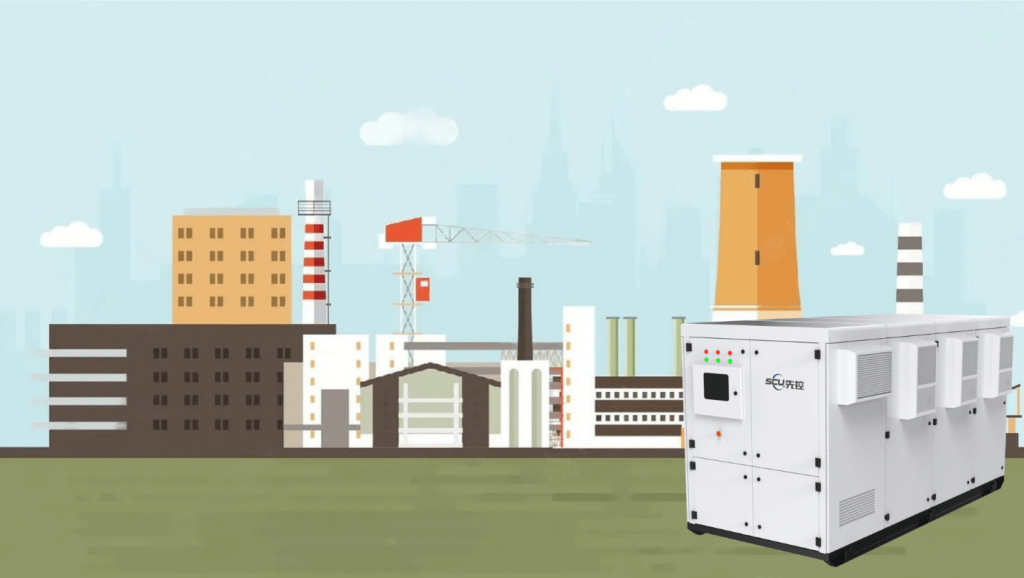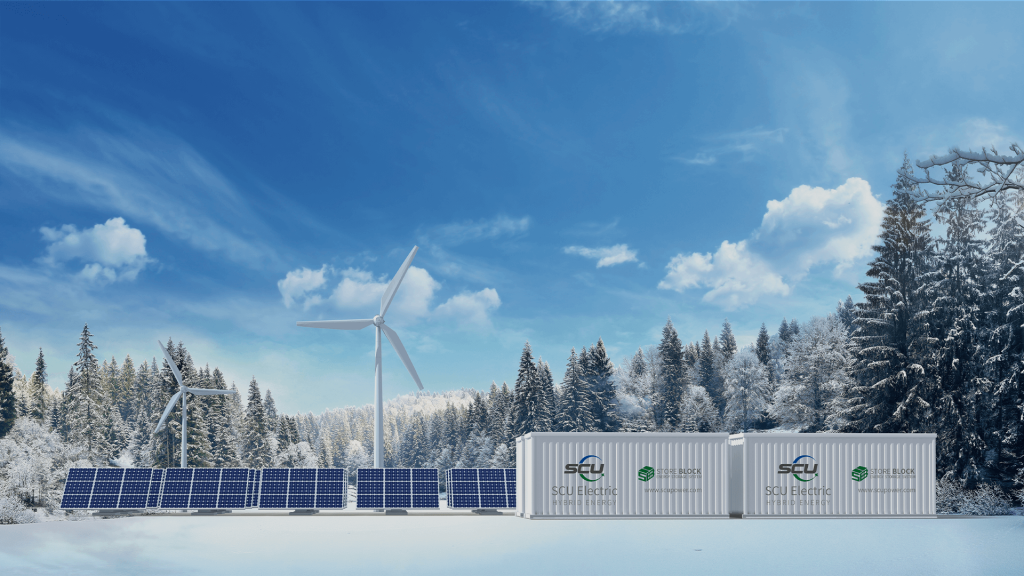As clean energy and sustainability increasingly become a global focus, energy storage technology is rapidly coming to prominence, providing businesses with a range of attractive opportunities. Industrial battery energy storage not only helps reduce energy costs but also provides flexibility, sustainability and access to market participation, allowing companies to achieve major breakthroughs in the power sector.
In this article, we’ll take a closer look at three different commercial and industrial battery energy storage investment models and how they play a key role in today’s energy landscape. Whether you are a large enterprise or an SME, you will find that commercial and industrial battery energy storage brings unique value and opportunities to your business.
1. Owner Self-Investment Model
The energy storage owner’s self-investment model refers to a model in which enterprises or individuals purchase, own and operate energy storage systems with their funds; that is, the owners of industrial and commercial enterprises invest and benefit themselves. This model differs from financial leasing or contract energy management because the energy storage system Energy equipment is purchased entirely by the owner, and the owner bears all related costs. The owner-invested model allows owners to participate in the power market and use the capacity and flexibility of the energy storage system to participate in different market opportunities, such as the capacity market, frequency adjustment market and electricity price response market.
The main profit channel of this model is Peak-valley arbitrage. This gives businesses maximum ownership and decision-making power, allowing them to fully customize the system to meet their needs. Owned investments allow companies to better manage their energy needs and sustainability goals but also require more resources to manage and operate energy storage systems.
For industrial and commercial energy storage power stations, through peak-valley price difference arbitrage,
annual income = discharge income – charging cost = actual discharge amount * peak electricity price – actual required full charge * valley electricity price = (peak electricity price * number of daily charges and discharges * consumption Number of days system efficiency total capacity charge and discharge efficiency)-(valley electricity price daily number of charges and discharge number of consumption days system efficiency*total capacity/charge and discharge efficiency)
The calculation is based on 90% discharge depth, system efficiency attenuation of 5% in the first year and 2% per year after that, charge and discharge efficiency of 92%, and consumption days of 330 days.
Under the owner’s self-investment model, the payback cycle of energy storage projects is the fastest. We can arbitrage income based on the project’s annual peak and valley profits.
Payback period = total cost/average annual peak and valley arbitrage.
2. Energy Management Contract (EMC)
The energy management contract (EMC) is a third-party investment model. When owners cannot invest due to some reasons, they can introduce cooperation with investors, outsource energy through EMC contracts, and share profits with investors, thereby reducing energy consumption and saving electricity costs. For enterprises, the EMC model provides more flexible investment options. Rather than requiring large capital outlays, businesses typically pay a fee based on the performance of the BESS and savings on electricity bills. Under the EMC contract energy management model, there are generally three ways of benefit sharing.
- One is that the investor pays rent to the enterprise to build the energy storage power station, usually based on a long-term contract, usually for several years or longer. These contracts typically specify performance metrics and payment structures.
- Second, the investor shares the project income according to the proportion agreed with the enterprise, which is usually 10%:90%, 15%:85%, etc.
- Third, investors and enterprises have agreed that enterprises can enjoy discounts on peak discharge electricity prices. It can help companies reduce energy costs, increase returns and improve grid stability.
Investors typically bear the performance risk of energy storage systems. Contracts often include performance guarantees, and if the system fails to provide services in accordance with the performance requirements specified in the contract, EMC may be required to pay compensation or take measures to ensure the normal operation of the system. When selecting an EM partner, companies should carefully consider its expertise, reputation and contractual conditions to ensure successful project implementation.
Under this model, the return rate of a relatively good distributed energy storage power station will reach an annualized return of 8-15%, and investors will get their money back in ~7-8 years. Currently, the EMC mode is widely used and the mainstream application mode for industrial users. By adopting the “two charging and two discharging” charging and discharging strategy, energy storage power stations charge during periods of low electricity prices and discharge during periods of high electricity prices, which can save tens to millions of yuan in peak electricity bills every year while greatly alleviating the tight supply and demand for electricity, the situation of excessive electricity bills. Through the construction of energy storage power stations under the energy management contract (EMC) model, high-energy-consuming enterprises can not only achieve optimal management of energy consumption but also obtain considerable profit returns.
3. Finance Lease
The energy storage financing leasing model allows companies to acquire energy storage systems without paying the full purchase cost. This model typically involves leasing companies providing financing to purchase, install and maintain energy storage equipment, while businesses pay rent to use the equipment. During the lease period, the ownership of the energy storage equipment belongs to the financial lessor and the owner with the right to use it. After expiration, the owner can obtain the ownership of the energy storage system. Financial leasing of user-side energy storage mainly includes two modes: direct lease and leaseback. Under normal circumstances, new projects are suitable for direct lease financing, and acquisition projects are suitable for sale and leaseback financing.
Normally, the financing for user-side energy storage is 70%-80% of the total investment. Under this ratio, the project cash flow can better cover the rent. The financing period for user-side energy storage is generally no longer than 6 years. It cannot exceed the service life that can be satisfied by the number of battery cycles under the charge and discharge strategy of the project. It is understood that the current financing interest rate for user-side energy storage is around 0.65, which can fluctuate up or down depending on the project situation and the investor’s credit status. If you add photovoltaics, you can achieve 0.55.
The main profit model of industrial and commercial energy storage is self-use + peak-valley price difference arbitrage or use as a backup power supply. Supporting industrial and commercial energy storage can realize investment returns by taking advantage of the peak-valley price difference of the power grid, that is, charging at low electricity prices when electricity consumption is low and discharging it to industrial and commercial users during peak electricity consumption, thereby helping users save electricity costs and avoid power cuts. Risks of. Regarding business models, there are currently three main scenarios: industrial and commercial users installing energy storage equipment alone, energy service companies assisting in installing energy storage, and new user-side energy storage scenarios.
Profit model and content of commercial battery energy storage:
- Energy time shifting
When the photovoltaic power generation output is large, the electric energy that cannot be used temporarily is stored in the battery. When the photovoltaic power generation output is insufficient, the electric energy in the battery is released to the electric load to realize “peak shaving” of the photovoltaic power supply. Optimize the proportion of self-consumption of photovoltaic power generation and maximize the reduction of electricity costs.
- Peak-valley arbitrage
Purchase low-priced electric energy from the grid when the electricity price is at a trough and supply it to the load during the peak or peak period of the electricity price, thereby reducing the enterprise’s electricity bill.
- Demand management
A two-part electricity price is adopted for large industrial electricity consumption with a power-receiving transformer capacity of 315 kVA and above. The two-part electricity price includes the electricity price and the capacity electricity price. The electricity price is calculated based on the actual electricity consumption of the user. The capacity electricity price can be selected by technology. Calculated based on the fixed capacity of the transformer or based on the maximum demand of the transformer.
- Backup power
For applications with high requirements on grid continuity, industrial and commercial energy storage systems can be used as backup power sources during power grid outages, replacing the functions of traditional UPS power supplies, providing backup power supply for key uninterruptible power loads in industrial and commercial parks, and responding to emergencies. Power outage accident.
- Electrical ancillary services
Ancillary services will become an important part of the power market transactions, and industrial and commercial energy storage can also serve as a new profit channel by providing ancillary services in the power market. The two charges are in the valley, and the two discharges are in the peak and peak periods, respectively. The average peak-to-valley price difference can be calculated, and the investment payback period can be measured.
Calculation of Levelized Cost of Energy Storage (LCOE) :
The cost of stored energy per unit, commonly known as the “levelized cost of energy storage” or “storage cost per unit,” is the cost associated with storing or releasing one unit of energy (typically measured in kilowatt-hours or megawatt-hours) within an energy storage system. Calculating the levelized cost of energy storage:
Levelized Cost of Energy Storage = (Initial Investment Costs + O&M Costs + Depreciation Costs + Energy Costs + Interest and Loan Costs) / (Total Stored Energy x Cycle Efficiency)
It’s important to note that the calculation of the levelized cost of energy storage may vary depending on the type of energy storage system, its purpose, and market conditions. Therefore, a detailed consideration of these factors is necessary before conducting specific levelized cost calculations. Additionally, the levelized cost of energy storage is a crucial economic metric used to assess the feasibility and competitiveness of energy storage projects.
The price of lithium battery raw materials, such as lithium carbonate, has also dropped further. Battery-grade lithium carbonate has once again fallen below 200,000/ton. Battery costs continue to fall, and the cost of industrial energy storage power stations will also drop accordingly.
There are also strong support policies from the government. Tax, subsidy, and market access policies are gradually becoming clearer. All are encouraging industrial and commercial users to build energy storage power stations, and industrial and commercial energy storage power stations are innovating business models, such as charging and swapping services for electric vehicles. , virtual power plants, and other combinations to improve energy storage systems’ economic benefits and commercial feasibility.


